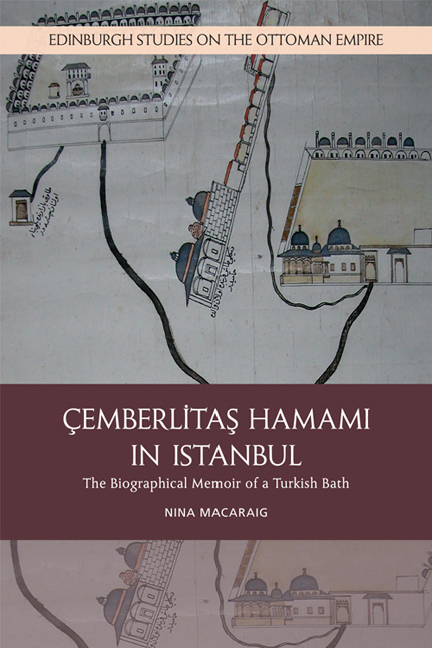Book contents
- Frontmatter
- Contents
- List of Tables
- List of Figures
- Preface
- Acknowledgements
- Note on Transliteration
- Introduction
- 1 Ancestry
- 2 Family
- 3 From Birth to Breadwinner
- 4 Impressions and Identity
- 5 In Sickness and in Health
- 6 Old Age
- 7 Second Spring
- Epilogue
- Appendix: Endowment Deed of the Atik Valide Vakfı (VGM, D. 1766)
- Notes
- References
- Index
7 - Second Spring
Published online by Cambridge University Press: 28 April 2021
- Frontmatter
- Contents
- List of Tables
- List of Figures
- Preface
- Acknowledgements
- Note on Transliteration
- Introduction
- 1 Ancestry
- 2 Family
- 3 From Birth to Breadwinner
- 4 Impressions and Identity
- 5 In Sickness and in Health
- 6 Old Age
- 7 Second Spring
- Epilogue
- Appendix: Endowment Deed of the Atik Valide Vakfı (VGM, D. 1766)
- Notes
- References
- Index
Summary
It describes how Çemberlitaş Hamamı has now become a building very much appreciated by foreign visitors, after many painters and authors of the last centuries depicted and praised its joy-giving qualities and enticed foreigners’ interests, and how the foreigners think about the hamam; how many people of Istanbul and of the Turkish Republic, after having mostly abandoned visiting this pleasurable place, are again coming to enjoy its blessings, why they do so, and how they think about the hamam; how the managers depict and praise the hamam's qualities for foreign and Turkish visitors alike, and how the attendants think about the hamam; and what the digital age may contribute to its story.
A New Identity III: Tourist Attraction
While in 1841 Çemberlitaş Hamamı provided services to the local inhabitants and generated money for the Atik Valide Vakfı, a phenomenon emerged in Great Britain that in the long run would have a considerable global impact, and also come to shape the hamam's life: tourism. In 1841, Thomas Cook for the first time organised a train excursion, called a ‘tour’, of a group of 400 or 500 from Leicester to Loughborough and back. In the same year, the first national railway timetable, Bradshaw, appeared, and the first European hotel built as part of a railway station opened in York. Moreover, in the decade between 1830 and 1840, the camera had been invented and the term ‘sightseeing’ introduced into the English language. The railway and the steamship now made travel a more common pursuit and no longer restricted to the upper classes, who in the nineteenth century undertook recreational trips primarily to resorts along the shores of the Mediterranean. With Thomas Cook's invention of all-inclusive tours, travel became much cheaper and easier in terms of arranging transportation and accommodation. The decline of the aristocracy after the First World War meant that vacation resorts became accessible to anybody who had the necessary disposable income.
The phenomenon of tourism encompasses much more than the mere physical act of traveling to a specific place and back. Tourism is also an act of getting to know an exotic Other, an epistemological performance that finds its origins in a time-period when Europeans set out to explore and colonise new continents.
- Type
- Chapter
- Information
- Cemberlitas Hamami in IstanbulThe Biographical Memoir of a Turkish Bath, pp. 207 - 240Publisher: Edinburgh University PressPrint publication year: 2018



